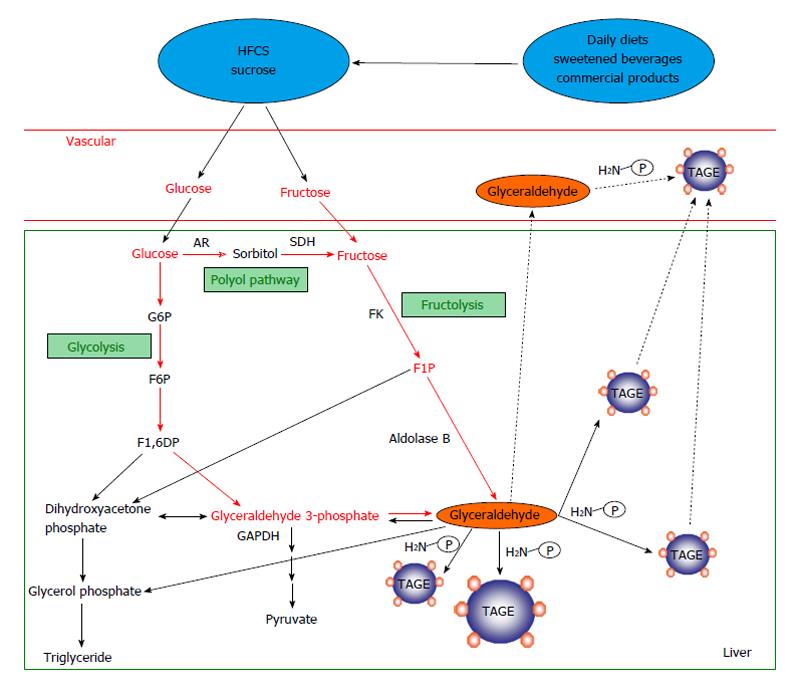Copyright
©2014 Baishideng Publishing Group Inc.
World J Hepatol. Dec 27, 2014; 6(12): 880-893
Published online Dec 27, 2014. doi: 10.4254/wjh.v6.i12.880
Published online Dec 27, 2014. doi: 10.4254/wjh.v6.i12.880
Figure 2 Routes for in vivo glyceraldehyde-derived advanced glycation end-products synthesis.
The glycolytic intermediate glyceraldehyde 3-phosphate (G3P) is usually catabolized (glycolysis) by the enzyme glyceraldehyde 3-phosphate dehydrogenase (GAPDH). However, reductions in GAPDH activity lead to the intracellular accumulation of G3P. As a result, G3P metabolism starts to occur via an alternative pathway, leading to a rise in the concentration of glyceraldehyde, which promotes the synthesis of TAGE. Fructokinase phosphorylates fructose to fructose 1-phosphate, which is then broken down into dihydroxyacetone phosphate and glyceraldehyde by aldolase B (fructolysis). The resultant glyceraldehyde is transported (or leaks passively) across the cell membrane. Glyceraldehyde promotes the formation of TAGE both intracellularly and extracellularly. AGEs: Advanced glycation end-products; TAGE: Toxic AGEs (glyceraldehyde-derived AGEs); HFCS: High-fructose corn syrup; AR: Aldose reductase; SDH: Sorbitol dehydrogenase; FK: Fructokinase; G6P: Glucose 6-phosphate; F6P: Fructose 6-phosphate; F1,6DP: Fructose 1,6-diphosphate; F1P: Fructose 1-phosphate; P-NH2: Free amino residue.
- Citation: Takeuchi M, Takino JI, Sakasai-Sakai A, Takata T, Ueda T, Tsutsumi M, Hyogo H, Yamagishi SI. Involvement of the TAGE-RAGE system in non-alcoholic steatohepatitis: Novel treatment strategies. World J Hepatol 2014; 6(12): 880-893
- URL: https://www.wjgnet.com/1948-5182/full/v6/i12/880.htm
- DOI: https://dx.doi.org/10.4254/wjh.v6.i12.880









